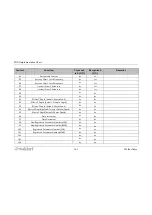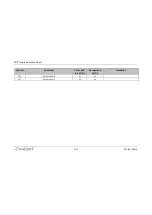
Glossary
151
Waldorf Kyra
combined with high subsequent amplification will reduce
the signal to noise ratio. In the unlikely situation you hear
noise (hissing) from Kyra, check that volumes are at the
right level. If you find the Master volume is much below
75% of its full level, look to turn that up and reduce the
level of your monitor amplifiers. Finding the right levels is
always a tradeoff and getting it right is a matter using your
ears and experience.
Slope
A setting in Kyra’s envelope generators that allows the
sustain portion of the envelope to take on a downward or
upward bias. This effectively makes the sustain portion
into another decay slope but with the additional feature of
being able to increase as well as decay.
Software (or Firmware) Update
The ability of Kyra to receive updated software versions
via USB. Software Updates can contain new features and
bug fixes.
Song Position Pointer
A feature of MIDI used by DAWs to specify where a song is
being played from. Kyra uses this information to start and
synchronise its arpeggiator. Often shortened to 'SPP'.
Sostenuto
A variation of note sustain whereby only notes played
whilst the sostenuto pedal is down are sustained. Not as
common as the sustain pedal but often used by classically
trained pianists. Useful for holding block chords in lower
registers whilst playing a melody in higher registers. Kyra
supports MIDI sostenuto.
SSD
Solid State Disk. A type of hard disk using Flash memory
rather than magnetic disks. When recording multiple
96kHz 24-bit streams from Kyra, your DAW will perform
better if it has an SSD.
Staccato
Notes that are played such that the previous note is relea-
sed before the next is played, the opposite of legato. In
Mono key mode, Kyra will suspend portamento for notes
played staccato.
Stopband
The range of frequencies attenuated by a filter.
Sub Oscillator
An oscillator that is tuned to a frequency below that of a
main oscillator, typically one octave below. Used to provi-















































